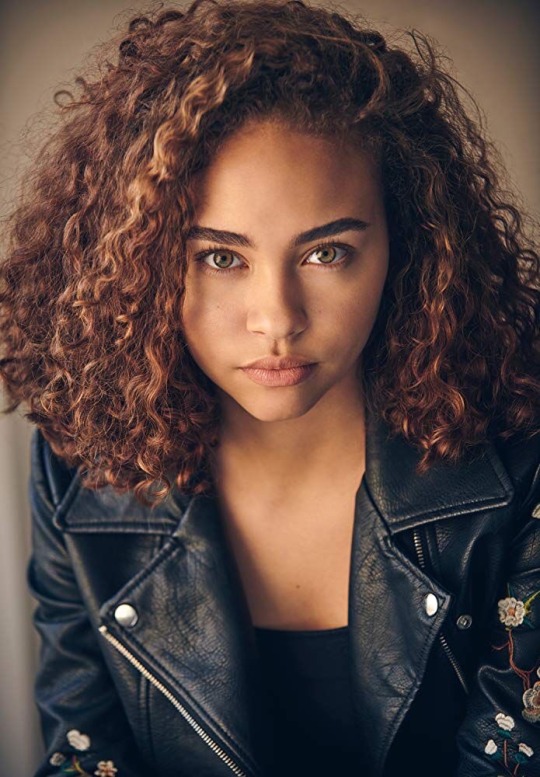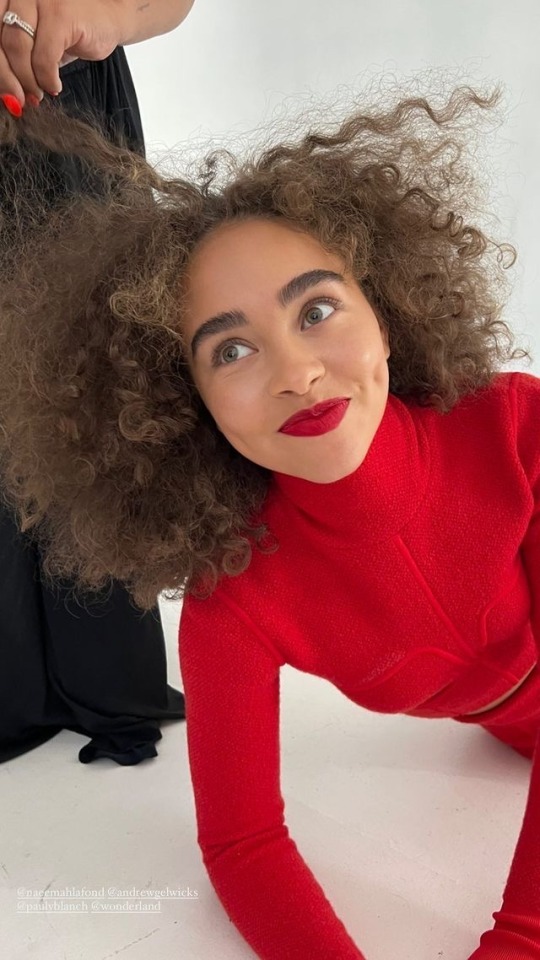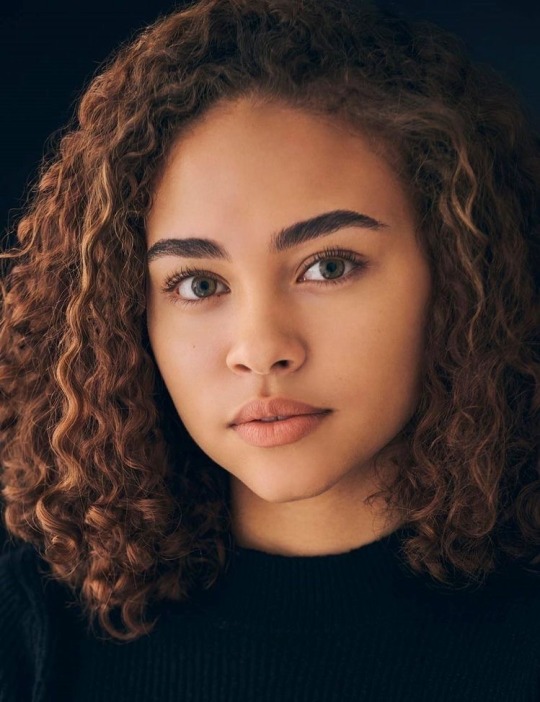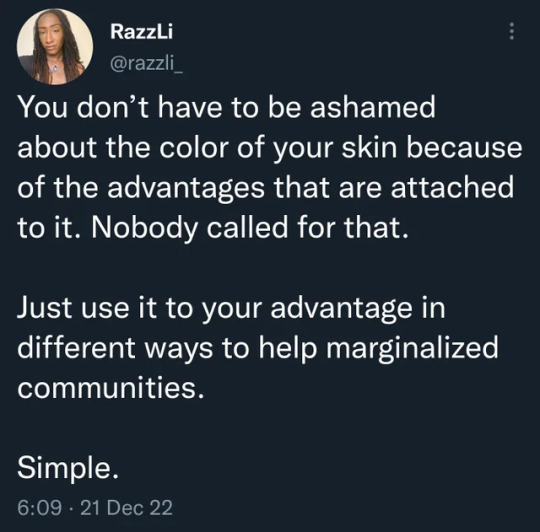#minority representation
Text
Just gonna take five business days to appreciate how Melissa O'Neil engages with her culture.
instagram
From what I learned through the bits of research I've done from seeing her posts - tea ceremonies, kung fu, and traditional martial arts have been around for thousands of years. They're super steeped 🫖 in her culture and I love that she's incredibly embedded in it, showcasing it, and educating others about it! Not to get political, but I think in this climate, it's super important for her to do this, differentiate between culture/people and current events, and showcase just how rich and beautiful Chinese culture is and how it's being reclaimed by people from the diaspora like her. I love that she's doing this. We all wish that Lucy's culture and ethnicity are acknowledged more on The Rookie and in fandom (it rarely even gets mentioned through the obvious - her physical appearance). I'm honestly not sure why Lucy's culture and ethnicity aren't acknowledged on the show and in fandom, and it's really sad that they aren't. So I'm glad that Melissa's doing a pretty loud and fantastic job of acknowledging! You go, Lucy Chen!
#Melissa O'Neil#chenford#the rookie#lucy chen#representation matters#woc representation#minority representation#media representation#things that matter
30 notes
·
View notes
Text
Disability Representation Win!!!
RTD went fearlessly with represention so far, he clearly has no fear of backlash. And the disability representation as a wheelchair user I was fucking ecstatic. Even more so than my excitement because I'm an enby, trans representation is amazing especially being Donna's daughter and a trans actor. But a wheelchair user character? We are always forgotten about. Also she's played by an actor who is a wheelchair user!!! I'm so happy. And they didn't shy away from making her an authority figure who should not be pitied.
Because fucking Chibnall's wheelchair representation was Yazmin's grandma feeling sorry for herself because "I was the first woman married in Pakistan , now look at me, in a wheelchair with shop bought cake" and it really fucking hurt. I remember how much that line in that episode hurt.
Credit where credit is due Chibnall did have disability representation. However, I feel like Ryan's dyspraxia was kind of shoe horned in as "see representation!" but it felt like he had dyspraxia when it was convenient to mention it and didn't have it in many other instances AND importantly the actor himself did not have dyspraxia, which cheapens it a little in my eyes. I also enjoyed that Diane not having an arm wasn't a huge plot point at all, she just doesn't have a lower arm, no biggie and it was a reflection of the actor who does not have a lower arm. Representation using actual members of the minority group ftw.
I don't remember if Moffat had any, he probably did? But not memorable I suppose.
I'll admit Shirley Anne Bingham having darts and explosives on her wheelchair was cool as fuck and makes sense since she works for a military-intelligence agency. The fact that it was a custom ultra light weight wheelchair not some annoying hospital one was also amazing, showing actual life of us wheelchair users (which make sense since the actor is one!)
youtube
#nuwho#doctor who#60th anniversary#doctor who specials#cpunk#cripple punk#represention#minority representation#wheelchair#mobility aid#disability#disability representation#RTD#chibnall#spoiler#Youtube
27 notes
·
View notes
Text
Thursday Thoughts: Levels of Media Representation
I saw Disney’s Strange World. I really liked Disney’s Strange World. One of the things I really liked about Strange World was how Ethan, the main teenage character, was gay.
Not that he was gay – how he was gay.
There’s more than one way to represent a minority identity in a movie. Each method of portraying this character and their identity has a different effect on the audience. When discussing media representation, it’s not enough to simply ask if there’s a queer character in this movie, or a Jewish character, or a disabled character, or a Black character. We also need to consider how the identity is represented, and exactly how much good – or harm – that kind of representation causes.
These different kinds of minority identity can be viewed as levels on a scale – from least explicit representation to most impactful representation.
An important disclaimer: I am a queer Jewish woman. I am also white and cisgender. In this blog post, I discuss representations of minority identities to which I do not belong, and so I have to assume that at some point I make a bad call about what is or isn’t “good representation” for those identities. It is vital to listen to oppressed people when they say that something is harmful. It is equally vital to listen when they say that something is empowering. I can explore this topic through the lens of the minority identities I have as well as my experience as a writer, media analyzer, and social justice warrior. I cannot call myself an expert on experiences I do not have.
But this idea has been bouncing around my head since I saw Strange World, and so now, I give it voice.
Let’s take a look at the levels of media representation.
[Here there be spoilers – for Disney’s Zootopia and Strange World, and also James Cameron’s Avatar. Other movies and series are mentioned in non-spoiler-y ways]
1. The Allegory
Many movies, especially children’s animated movies, present an allegory for minorities and the struggles they face. A recent example is Disney’s Zootopia, in which different animal species and species groups metaphorically represent real-world human groups. Judy’s struggle to be accepted and respected as the first rabbit police officer directly parallels women’s struggle to break into male-dominated careers.
At the same time, in Zootopia, predators are across the board viewed as potentially dangerous and untrustworthy, mirroring many stereotypes about and bigotry perpetrated against BIPOC humans. At one point, a pig shouts at a cheetah, “Go back to the forest!” It’s as blatant as can be. But an allegory for people of color is not the same thing as telling a story that includes people of color, even if some of the movie’s side characters are voiced by Black and Latinx actors.
There’s also a big problem with an allegory like the one presented in Zootopia – there’s a “reason” for the bigotry. The prey animals have a legitimate, historical reason to fear and hate predators. In the real world, there is no legitimate, historical reason for white people to fear and hate people of color. While allegories can be useful conversation starters or early lessons about prejudice, they often teach, however accidentally, that bigotry is rational.
2. Coding
Sometimes, a movie will include a character who seems queer because of their appearance, their speech, or their body language, but nothing actually happens in the story that confirms it. Or, sometimes a character seems Black, but their skin is actually grey or purple because they’re an alien. These are examples of minority coding.
Coding is important to understand as a part of film history. For a long time, the only way queer creatives could get away with portraying a character who was in any way like themselves was to create a queer-coded character – like Ursula from The Little Mermaid, created in part by Howard Ashman and modeled after the drag queen Divine. Besides the creative outlet, the value of a minority-coded character is that it allowed minority viewers to identify with a character for what was often the first time ever.
The unfortunate side of minority-coding is that coding often involves falling back on harmful stereotypes, especially when the character is created by someone who doesn’t share the identity. Think about Watto from the Star Wars prequel movies, with his big nose, his little round black hat, his nebulously-Eastern-European accent, and his obsession with money. He’s Jew-coded, though I really wish I could disown him.
Even when a coded character is created with love and good intentions, the fact that the character’s identity is never explicitly confirmed in the movie gives bigoted viewers an easy out or an excuse to cause harm. It’s truly awful when a minority viewer who identifies with a fictional character gets dogpiled on social media by white supremacists who are furious that she dared to claim their favorite alien character was Black.
3. The Easy Cut
Near the end of Star Wars: The Rise of Skywalker, two minor characters, both women, run up to each other and kiss. This is an example of the easy cut level of media representation. If you were to cut about five seconds of footage out of this movie, you would cut out the entirety of its queer representation. I won’t beat a dead horse here, but this kind of representation, though explicit, is insufficient.
I also include in this category those TV characters who are revealed to be Jewish during the show’s Christmas episode, but their Judaism is never brought up in any other context. If you skipped that one episode, you would never know they were Jewish, so does it really matter?
4. Ignorable
Sometimes a character has dark skin, but their race doesn’t have any impact on their story or how they move through the world. Sometimes a character has an accent that implies that they’re from a certain part of the world, but we never actually learn anything about their culture. Sometimes a character has a mezuzah on their doorpost, but they don’t ever mention the fact that they’re Jewish even though their story is about literally wrestling with Egyptian gods. (Yeah, I’m still salty about Moon Knight.)
These are examples of ignorable representation. The visible or audible aspects of this character’s minority identity are present for more than five seconds, so you couldn’t so easily cut it out of the show. However, the character interacts with the world in the exact same way that the “default” straight white man would. The media ignores how different identities create unique perspectives and experiences. As a result, this character’s minority identity hardly matters at all.
5. The Token Minority
The Black best friend. The sassy gay friend. The one elderly Asian man who owns the restaurant. The only female Smurf. These are some examples of the token minority. They’re not the main character of the story, and so they’re often one-dimensional, lacking a driving plotline of their own. Their only purpose in-universe is to support the straight/white/male/all of the above protagonist.
This is because their only purpose out-of-universe is to draw in a wider audience because the show has a character who is not straight/white/male/all of the above. As a result, this character lacks the complexity to be a true representation of a person and their experiences, which has the harmful effect of implying that real-world people with minority identities are not as complex, interesting, or worthy of focus as real-world people with majority identities. If every time you see yourself in a story, you are the side character in someone else’s life, what does that teach you about how you fit into the world? The token minority exists, and their identity cannot be ignored or denied, but they still don’t seem to matter.
6. Suffering
Finally, a category where the minority character’s identity cannot be ignored, and they are also the main character! However, the reason that their identity cannot be ignored is that their identity is the cause of the story’s conflict. Their identity is a big, terrible deal – a source of obstacles or of outright suffering for the character.
Think about Black people in movies about slavery, Jewish people in movies about the Holocaust, or queer people in movies about homophobia. Their identity matters to the story, yes, but in a profoundly negative way. The character’s minority identity might even be presented as something to escape or overcome, instead of as an important part of who they are. In James Cameron’s Avatar, Jake Sully begins the movie as a paraplegic, and his happy ending involves receiving a new body that is not disabled.
It is important for us to see and learn stories about different people’s struggles. We cannot afford to allow the world to forget about the ways that bigotry has led to suffering, because when we remember, we can learn from history and – G-d willing – put an end to bigotry, or at least more effectively fight it.
The problem is when these stories dominate the media. If we only hear about Jewish suffering, and never about Jewish joy, that sends a message to the world that Judaism is a terrible thing. Minorities’ suffering is one kind of representation, but it cannot be a complete picture.
7. Not A Big Deal, Yet Impossible To Ignore
But what if a movie included, as a main or major character, someone whose minority identity is not a big, bad deal, but also something that has a real impact on the way this character interacts with the world around them, to the point where their identity cannot be cut, ignored, or denied?
This brings me to Ethan from Strange World. While watching this movie, I felt I was truly seeing a person. Not an allegory, an implication, a stereotype, a token, or someone who only existed to suffer.
Ethan is a gay person. He’s a teenager with a crush on a boy named Diazo. He flirts with Diazo. His friends make fun of him and Diazo for flirting with each other. Ethan’s dad, Searcher, wants to meet and get to know Diazo, and Ethan is completely embarrassed about this. In the middle of a dangerous adventure, Ethan gleefully imagines how impressed Diazo will be when he hears about it. Ethan’s grandfather, Jaeger, is excited to hear Ethan talk about how Diazo makes him feel. Also, Ethan’s relationship with Diazo, and the way Diazo encourages Ethan to be himself and be an explorer, is an integral part of Ethan’s journey and character growth through the movie.
It is impossible to ignore that Ethan is gay. But it’s also not a big deal. It’s an integral part of who Ethan is. It informs his behavior just as much as being straight or aro-ace would inform his behavior. But it’s not an obstacle, nor a source of suffering, nor the only reason that Ethan exists in the story.
We need more of this kind of representation. I cannot exaggerate how much of a positive impact that characters like Ethan stand to create. People of all identities deserve to see themselves in movies, series, and all kinds of media as complete human beings who matter and whose identity matters as an integral part of their lives. Ethan is not the first example, and not even the first example that Disney has created (Mirabel from Encanto comes to mind – she and her family are undeniably, integrally Colombian). But he is an example that all creatives should learn from.
#thursday thoughts#strange world#media representation#media analysis#minority representation#queer characters#jewish characters#diversity#zootopia#disney movies#disney
66 notes
·
View notes
Text

#life expectancy#healthcare disparities#Black doctors#primary care#racial disparities#healthcare access#racial health disparities#healthcare equity#access to healthcare#minority representation#healthcare workforce#community health#social determinants of health
5 notes
·
View notes
Text
Children's Books About Minorities (4/?)
Amira’s Picture Day by Reem Faruqi

A sweet story about one of the struggles of being from a minority religion that people from the majority religion may not even think about: celebrating a holiday that falls outside of official holiday days (many of which cater only to the majority religion). It can also be used to talk about how these struggles are similar to those of minority cultures regardless of religion, as only the majority culture’s celebrations tend to get official time off (e.g. lunar new year is a huge deal in many Asian cultures regardless of an individual’s religion).
#kidlit#children's literature#children's books#librarylife#libraryland#school librarian#libraries#school libraries#minority representation#holidays#muslim characters
3 notes
·
View notes
Text




Bailey Bass aka Claudia in Interview with the Vampire is so pretty! Like literally stunning and I can’t get over this!
So many people get mad when you replace a white character with a person of colour. But I won’t hear them out. I love thé OG, because I adore Kirsten Dunst, but this will always be my Claudia. Little Fang really needed a character like her to look up to. There weren’t many black characters when I was a kid, I would have cried if I saw her on screen.
She is so important and no I will NOT be shutting up about this. If you think there’s something wrong with adding representation to media, just say you’re racist or a bigot and leave. Thanks.
#Bailey bass#Claudia#interview with the vampire#representation#minority representation#black women#black representation
49 notes
·
View notes
Text

#usa politics#american politics#us politics#right wing politics#politics#expert reveals#experts reveal#says expert#ethnic minority#minority communities#minority voters#minority representation#model minority#policy
20 notes
·
View notes
Text
Can we take a minute to appriteate 911 Lonestar? It's one of my favorite shows that's on TV channels. There are several characters that are lgbt+ and their actors are also lgbtq+ and I love it.
There's an adorable romance between the fire captain's son(TK Strand) and a police officer(Carlos). They are so cute together and so supportive of each other and I want what they have.
There's also a trans guy(Paul) and his representation is so casual I forget he's trans. Like there was one episode where his family comes to visit and his sister and him don't really get along, but they eventually work through it.
Other than lgbtq+ representation there's also other things. Like finding out you had another kid and trying to bond with them. Or a short guy dating a tall girl and working through those insecurities. Or casual representation of a Muslim woman wearing a headscarf And I think someone is also Jewish but I can't remember who.
This is one of my favorite shows because the representation and lessons it has. Also the drama of saving people is pretty fricking awesome. It's available to watch on Hulu, other streaming services, and some channel on directv. I want to think NBC probably
#911 lone star#tk strand#carlos rivera#hulu series#directv#lgbtq representation#muslim representation#minority representation#one of my favorite shows rn#it's so good watch it
17 notes
·
View notes
Text
I swear to FUCKING GODD if paper girls gets canceled…..
I will not be responsible for my actions
I love it so much
It feels so personal
The st comparisons make like only a teeny tiny bit of sense but I do wish it had the same hype
But ofc it won’t cuz it’s 4 female leads and no mAle lOvE iNtErEsT n more minority leads
Like??? Cmon bros realize it’s brilliance
Genuinely is one of the most beautiful shows I’ve ever seen
18 notes
·
View notes
Text
I wanna make one thing clear Netflix. If you kill off Terra, your one plus size actress in the show, just so you can have a different minority present I’m gonna kick your teeth in.
JUST GIVE US BOTH!!!!!
#fate the winx saga#terra fate#fate the Winx saga season 2#minority representation#give us both the Latino and the big girl#I’m getting sick of their minority capping on shows
17 notes
·
View notes
Text
Is it just me or is it frustrating when people get up set and ban their kids from watching kid shows/movies because it has a scene or it implies something that goes against the "norm"? Norms change as people in society views change. If views did not change then women and other minority groups would not be able to vote in the U.S. There would be fewer interracial couples and mixed kids. And I highly doubt the 13 though 15 amendments would not exist in America. Jim Crow laws would still exist in some states. Want more proof that norm change, look at the entire American History. Norms change all the time.
#lgbtqia rights#marriage equality#minority rights#minority representation#humanity#human rights#politics#trans rights#gay rights
2 notes
·
View notes
Text
Okay, okay-
So question for anyone whom is an avid reader or just is genuinely curious about the question I'm going to ask: If I wrote a coming of age story, should it be based off of our current world/systems or a fantasy world I make up that represents our non-fictional world?
It's going to be a book representing minority groups, so, please, let me know what you think! Also, if you have anything- recommendations, for example, to represent different groups correctly, then, please, share with me?
#questions#author#coming of age story#lgbtqia+ story#original writer#minority representation#help a young author#book plan#open to suggestions#idk how to tag this#idk what else to tag
5 notes
·
View notes
Text
The Presence of Black Characters in Science Fiction: Exploring Themes and Impact
Science fiction has always been a platform for exploring the unknown, and the genre has evolved tremendously in the past few decades. However, one aspect that has remained constant is the presence of Black characters. From the earliest stories to the most recent films, Black characters have been used to explore various themes and ideas. In this essay, we will explore the different ways that Black…
View On WordPress
0 notes
Text
NaPoWriMo 2023 Day 14: Satire on Bukowski's To the whore who took my poems
Today’s prompt was to satirise a poem that exists so I went into a deep rabbit hole of Charles Bukowski’s poems because my favourite boy to hate on Andrew Marvel has been called out in many ways and I didn’t wanna go that path unless it’s perfect. Anyway, the point is, Charles Bukowski wrote a poem called, “To the whore who took my poems” and I want you to read it before you come to this and then…

View On WordPress
#april#blogger#charles bukowski#children#creative#feminism#feminist rewriting#gender studies#kitchen#marriage#minority representation#misogyny#napowrimo#napowrimo 2023#napowrimo2023#nationalpoetrymonth#poem#poems#poet#POETRY#prompt#sad#satire#Shakespeare#women writing#WordPress
0 notes
Text
I think some people here really overcorrect for bad tokenized representation of marginalized groups and identities by like seeming to assume that if a character is a minority then they have some sort of immutable Goodness Essence while a character who is part of a dominant identity has some immutable Badness Essence within them.
And those essences don't reveal themselves until critical Story Moments and then they point to it and go AHA! So-and-so were good/bad all along and they were just waiting for a chance to show their true colours!!!
But they don't really stop to think about why they assume this in the first place. Why place these Goodness and Badness Essences within these characters? And they do not interrogate where oppression arises in our society. I feel like if they do they would realize they just Uno Reverse Carded the stuff that the oppressors of society have done to minorities and that ain't cool either.
People aren't inherently good or bad, but of course there are things in their upbringing or in society that makes it more likely that certain groups will believe certain ideologies more than others or fall for propaganda. And perhaps that is cemented in their sense of self in a way that is more unshakable than if they had different upbringings where they were not part of the dominant group.
But this doesn't mean that if you are part of a minority that you are immune to bad ideology or black and white thinking. You may be less prone to it, but you are not immune to propaganda.
YOU ARE NOT IMMUNE TO PROPAGANDA.
#yeah this is about the other thing#no i will not elaborate#rant#shitpost#political ideologies#marginalized groups#minority representation#morality#discussions of oppression#ethics#you are not immune to propaganda
1 note
·
View note
Text
Children's Books About Minorities (6/?)
Look Up! by Jung Jin-Ho

High on a balcony, a girl watches the world-- passersby hurrying along, carrying umbrellas in the rain, riding bikes and walking dogs. She wishes that someone-- anyone!-- would look up and notice her. Finally, one day, a boy does.
#school libraries#school librarian#librarylife#libraryland#libraries#kidlit#children's literature#children's books#minority representation#asian characters#asian authors
2 notes
·
View notes